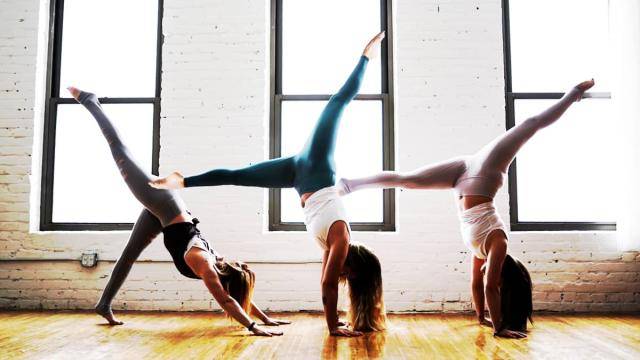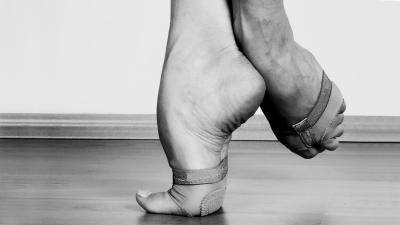As a dancer, practicing movement modification may be just as important as every other part of class and rehearsal. But, some dancers may not have an understanding of what modification is and how to use it as a tool. So, how can we use modification to combat pain, fatigue, and burnout? Read on!
In July, I taught at a two-week dance intensive for high school-aged students and older. Class offerings included Modern, Jazz, Contemporary, Lyrical Jazz, Tap, Contemporary Ballet, and repertory classes in which the students rehearsed with workshop faculty to create a piece for the student concert. In other words, the students were dancing a lot, and by the second week, I noticed that several were choosing to sit and watch after attempting to do some portion of the class. Most of these dancers were experiencing the aches, pains, fatigue, tiredness, and other symptoms of burnout that often blossom during times of intense practice. Instead of pushing through the pain, they made what many consider to be the "smart" choice to observe the class and rest to avoid burnout. However, as a student, one quickly begins to develop the mental accompaniments of sitting out. From depression to jealousy, sadly, I bet most of us have suffered through this situation.
Dancing full-out doesn't have to mean blowing out your body.
Before continuing, let me give you a quick recap of my recent injury history. In the past five years, my rehabilitation card has been full. A fractured fifth metatarsal and bilateral hip surgeries have prevented me from always getting to dance full-out. Moreover, I often cannot replicate the movement as the teacher instructs, which I find frustrating. Though, as challenging as these years have been, they have produced a more confident me in the dance studio. Here are a few things I learned throughout this educational process that facilitated staying physically involved in classes and encourage dance health.
Tell your teacher
Whether you're taking from the instructor for the first time or the umpteenth time, always inform your teacher that you might be modifying some movements in class. The more specific you can be, the better. For example, instead of stating that your ankle is bothering you and you're going to take it easy in class, you could say that you'll be avoiding jumps and quick directional changes. Doing this shows your instructor that you are aware of what you need to avoid but that you'll still be present and physically engaged.
Seek out alternative movements
This advice may sound simple, but there are several considerations one must ponder. First, decide which move(s) you'll need to avoid due to pain and or fatigue. Then, observe the spatial, rhythmic, and dynamic demands so that you can create new material that stays respectful to what the teacher originally gave. For example, as an alternative to a quick slide to the floor - roll - and get back up in Jazz class, one could choose to add a dragging step - chaîné turn that travels the same amount as the floor work. Choosing movements that adhere to the original demands will result in peers that aren't disrupted by your surprising choices.
Focus on the good
Instead of dwelling on what you can't do, veer toward what you can still execute. Since my surgeries, my hips have been very tight and weak despite a tremendous amount of rehabilitation. So, for now, I have chosen to keep my legs below 45 degrees and focus more on my spinal mobility, arm pathways, performative energy, depth of plié, and expanding through my kinesphere. Let's say you have a mild ankle sprain and you've been instructed not to dance in Ballet class. My suggestion would be to sit in a chair and shift your focus to purely your upper body. Clarifying your head and neck positions, exploring how your shoulders articulate while using your port de bras, and working to engage the muscles in your face through the entire class can be just as satisfying by utilizing this time as a period of fierce investigation.
All or nothing?
Many of the intensive students I spoke to about why they were sitting out believed that dancing full-out means giving it everything you've got, and if that's not possible, then you should just sit out. Unfortunately, I didn't get to probe further into where this belief stems, and also, lamentably, this isn't the first time I've encountered this belief. It's time for dancers to realize their agency in the dance classroom by promoting modification in a safe and intelligent manner. Dancing full-out doesn't have to mean blowing out your body every time you take a dance class. Instead, make the choice to dance to your fullest at that particular time.
Instead of dwelling on what you can't do, veer toward what you can still execute.
It's been said before, and it will be said many times again, that our body is our instrument and we must take good care of it. By recognizing the need for modification in the dance classroom and utilizing these tips, we can all dance, sweat, and give our absolute best at one given moment knowing that tomorrow may bring alternative modification requirements. And that's ok!
For more suggestions on modifying in the dance studio, I suggest reading this resource paper: "Technique Class Participation Options for Injured Dancers."




